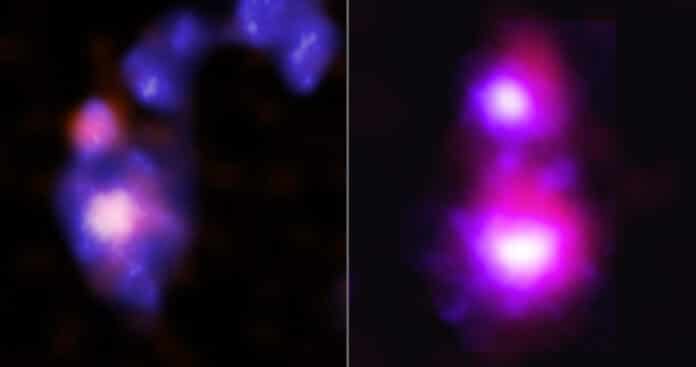NASA’s Chandra telescope has detected massive black holes on a trajectory towards collision.
This is the first evidence for such an impending encounter.
Using NASA’s Chandra X-ray Observatory, a recent study has identified two sets of supermassive black holes in dwarf galaxies that are moving towards a collision. This discovery is significant as it provides researchers with valuable insight into the growth of black holes during the early stages of the Universe. While it is a known fact that dwarf galaxies merge to form bigger galaxies, it is not possible to observe the initial mergers of the first generation of dwarf galaxies due to their extreme faintness at far distances.

To overcome these challenges, the recent study adopted a comprehensive approach that involved a thorough exploration of Chandra X-ray observations, alongside the use of optical data from the Canada-France-Hawaii Telescope and infrared data from NASA’s Wide Infrared Survey Explorer (WISE) (CFHT). The team’s objective was to identify pairs of intense X-ray sources within merging dwarf galaxies, indicative of the presence of two black holes. They successfully detected two such examples.
In the galaxy cluster Abell 133, which is located 760 million light-years away from Earth, the study identified one pair of merging dwarf galaxies with a long tail resulting from tidal effects from their collision. The left image in the composite picture shows this pair, with pink indicating Chandra X-ray data and blue indicating CFHT optical data. The researchers have named this pair “Mirabilis” after a hummingbird species with a distinctive long tail. The two Chandra sources within each galaxy emit X-rays from the black hole’s surrounding region, indicating their presence.
The other pair of merging dwarf galaxies was found in Abell 1758S, a galaxy cluster situated about 3.2 billion light-years away. The researchers named these galaxies “Elstir” and “Vinteuil,” inspired by fictional artists from Marcel Proust’s “In Search of Lost Time.” The top galaxy in the picture is Vinteuil, and the bottom one is Elstir. These two galaxies are in the initial stages of merging, creating a bridge of gas and stars connecting them due to their gravitational interaction.
By studying these systems in detail, astronomers can investigate essential processes for comprehending galaxies and their black holes during the early stages of the Universe. Follow-up observations of these merging dwarf galaxies are necessary to gain further insights.
Journal Reference:Marko Mićić, Olivia J. Holmes et al. Two Candidates for Dual AGN in Dwarf-Dwarf Galaxy Mergers. The Astrophysical Journal. DOI: DOI: 10.48550/arXiv.2211.04609
Do not forget to share your opinion with us to provide you with the best posts !



0 Comments